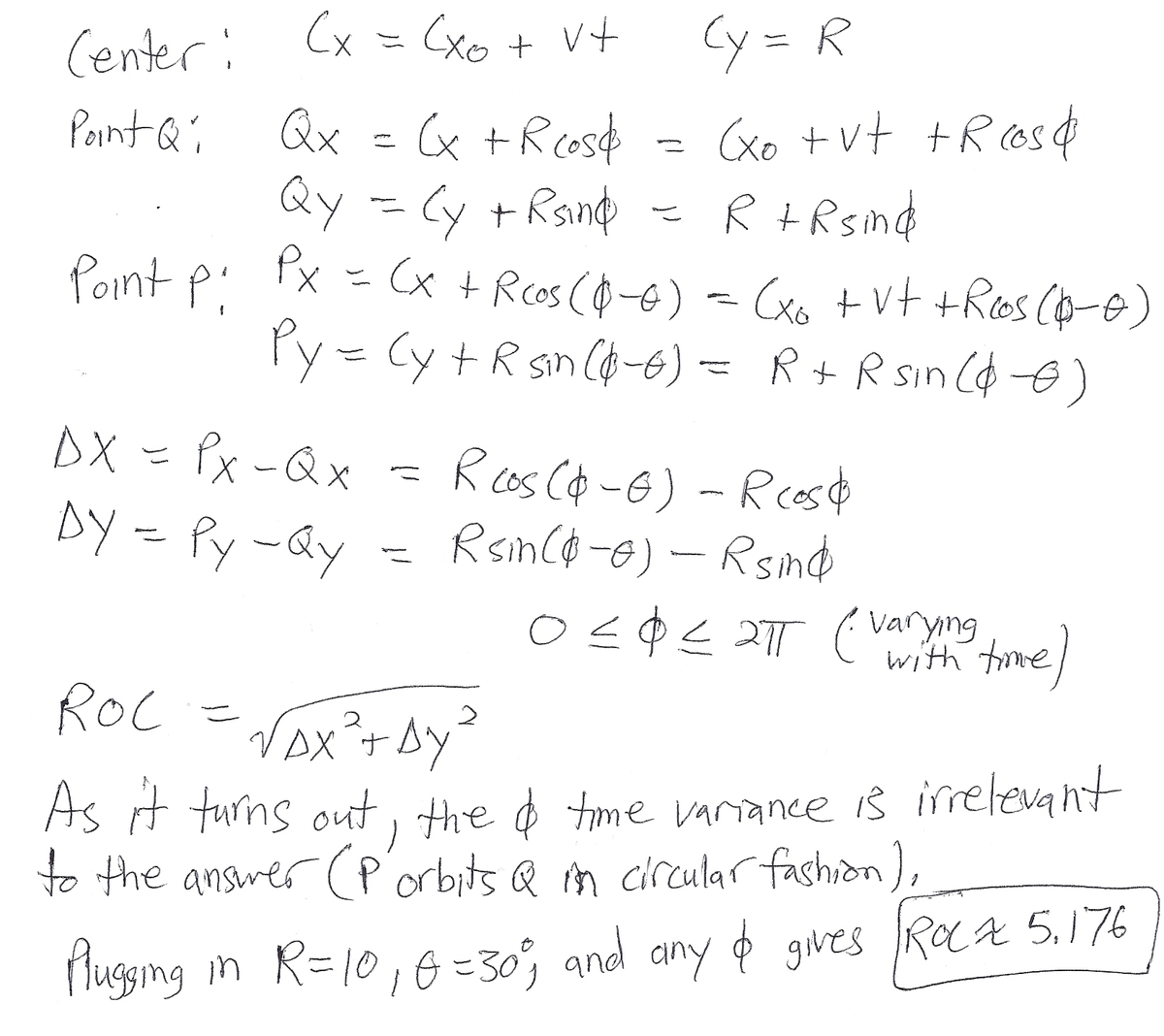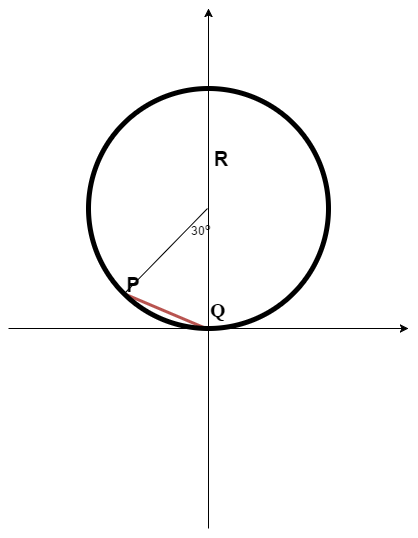Complexity Of Frame Changes
A ring of radius is rolling without slipping on a horizontal surface at a linear speed of .
Let and be two points on the ring, as shown in the figure above.
Find the radius of curvature of the path traveled by as observed from .
Details and Assumptions:
- Take and .
The answer is 5.176.
This section requires Javascript.
You are seeing this because something didn't load right. We suggest you, (a) try
refreshing the page, (b) enabling javascript if it is disabled on your browser and,
finally, (c)
loading the
non-javascript version of this page
. We're sorry about the hassle.

The motion of the ring can be split into 2 parts- part 1 is the rotation about the center and part 2 is the translational speed of v. Since all points on the ring move at the same translational speed, transforming into the frame of any point on the ring would have no effect and part 2 is irrelevant to the problem. Now moving into Q's frame of reference, it is now simply the rotation of the ring about Q as shown in the diagram
The red line will be the radius of curvature and it would be 2 R sin ( 1 5 o ) = 5 . 1 7 6